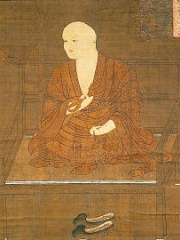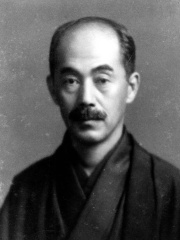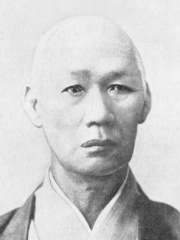



The Most Famous
LINGUISTS from Japan
Top 4
The following people are considered by Pantheon to be the most legendary Japanese Linguists of all time. This list of famous Japanese Linguists is sorted by HPI (Historical Popularity Index), a metric that aggregates information on a biography's online popularity.

1. Kūkai (774 - 835)
With an HPI of 70.88, Kūkai is the most famous Japanese Linguist. His biography has been translated into 42 different languages on wikipedia.
Kūkai (空海; Japanese pronunciation: [kɯꜜː.kai], 27 July 774 – 22 April 835), born Saeki no Mao (佐伯 眞魚) posthumously called Kōbō Daishi (弘法 大師; [koː.boː daꜜi.ɕi], lit. 'the Grand Master Who Propagated the Dharma'), was a Japanese Buddhist monk, calligrapher, and poet who founded the esoteric Shingon school of Buddhism. He travelled to China, where he studied Tangmi (Chinese Vajrayana Buddhism) under the monk Huiguo. Upon returning to Japan, he founded Shingon—the Japanese branch of Vajrayana Buddhism. With the blessing of several Emperors, Kūkai was able to preach Shingon teachings and found Shingon temples. Like other influential monks, Kūkai oversaw public works and constructions. Mount Kōya was chosen by him as a holy site, and he spent his later years there until his death in 835 CE. Because of his importance in Japanese Buddhism, Kūkai is associated with many stories and legends. One such legend attributes the invention of the kana syllabary to Kūkai, with which the Japanese language is written to this day (in combination with kanji), as well as the Iroha poem, which helped to standardise and popularise kana. Shingon followers usually refer to Kūkai by the honorific title of Odaishi-sama (お大師様; "The Grand Master"), and the religious name of Henjō Kongō (遍照金剛; "Vajra Shining in All Directions").

2. Kunio Yanagita (1875 - 1962)
With an HPI of 59.23, Kunio Yanagita is the 2nd most famous Japanese Linguist. His biography has been translated into 20 different languages.
Kunio Yanagita (Japanese: 柳田 國男, Hepburn: Yanagita Kunio; July 31, 1875 – August 8, 1962) was a Japanese author, scholar, ethnographer, and folklorist. He began his career as a bureaucrat, but developed an interest in rural Japan and its folk traditions. This led to a change in his career. His pursuit of this led to his eventual establishment of Japanese native folkloristics, or minzokugaku, as an academic field in Japan. As a result, he is often considered to be the father of modern Japanese folklore studies.

3. Nakahama Manjirō (1827 - 1898)
With an HPI of 59.01, Nakahama Manjirō is the 3rd most famous Japanese Linguist. His biography has been translated into 16 different languages.
Nakahama Manjirō (中濱 万次郎; January 27, 1827 – November 12, 1898), also known as John Manjirō (or John Mung), was a Japanese samurai and translator who was one of the first Japanese people to visit the United States and an important translator during the opening of Japan. He was a fisherman before his journey to the United States, where he studied English and navigation and became a sailor and gold miner. After returning to Japan, he was elevated to the status of a samurai and was made a hatamoto. He served his country as an interpreter and translator and was instrumental in negotiating the Convention of Kanagawa. He also taught as a professor at the Tokyo Imperial University.

4. Takekazu Asaka (b. 1952)
With an HPI of 55.53, Takekazu Asaka is the 4th most famous Japanese Linguist. His biography has been translated into 18 different languages.
Takekazu Asaka (in Japanese: 浅香 武和), born in Tokyo in 1952, is a Japanese linguist and lecturer of Philology at the Tsuda University, Tokyo. He translated the works of Galician authors such as Rosalía de Castro, Ramón Cabanillas and Uxío Novoneyra into Japanese, and published the first Galician grammar book in Japanese. He defines himself as "ambassador of Galician culture in Japan." He is also responsible for organizing Galician music and poetry festivals in Tokyo, and in other cities, to celebrate Galician Literature Day. Since June 2017, he has been made an academic correspondent of the Royal Galician Academy in recognition of his work.
People
Pantheon has 4 people classified as Japanese linguists born between 774 and 1952. Of these 4, 1 (25.00%) of them are still alive today. The most famous living Japanese linguists include Takekazu Asaka. The most famous deceased Japanese linguists include Kūkai, Kunio Yanagita, and Nakahama Manjirō.

